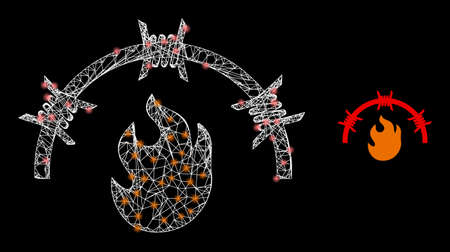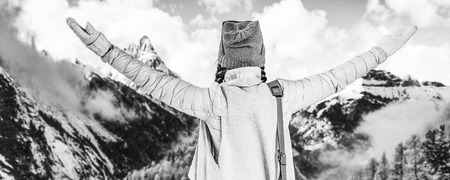Introduction to Leave No Trace
If youre new to hiking in the United States, you might hear people talk about “Leave No Trace” or see the abbreviation “LNT” on trail signs and park brochures. But what does it really mean? Leave No Trace is a set of outdoor ethics designed to help everyone enjoy nature while keeping it beautiful and healthy for future generations. In the U.S., these principles are a big part of outdoor culture, especially among hikers, campers, and anyone who spends time in natural spaces.
What Are the Leave No Trace Principles?
The Leave No Trace Center for Outdoor Ethics created seven simple guidelines to help us minimize our impact on the environment. Here’s a quick overview:
| LNT Principle | What It Means |
|---|---|
| Plan Ahead and Prepare | Research your destination, know the rules, and get ready for changing weather or emergencies. |
| Travel and Camp on Durable Surfaces | Stick to trails and established campsites to avoid damaging plants and soil. |
| Dispose of Waste Properly | Pack out all trash, leftover food, and litter—leave nature cleaner than you found it! |
| Leave What You Find | Don’t pick flowers, take rocks, or carve into trees—let others enjoy wild places just as you did. |
| Minimize Campfire Impact | Use a camp stove or follow local fire rules to prevent wildfires and protect habitats. |
| Respect Wildlife | Observe animals from a distance, don’t feed them, and store food securely. |
| Be Considerate of Other Visitors | Keep noise down, yield to others on the trail, and respect everyone’s outdoor experience. |
Why LNT Matters in American Outdoor Culture
In the U.S., public lands like national parks, forests, and wilderness areas are open for everyone to explore. The Leave No Trace principles help protect these shared spaces so that all visitors—from families with kids to solo backpackers—can have a great experience without harming nature. Following LNT isn’t just about rules; it’s a way to show respect for the land, wildlife, other hikers, and future generations. By learning these basics as a new hiker in America, you’ll fit right in with the local outdoor community and help preserve wild places for years to come.
2. Why Leave No Trace Matters for US Trails
The Impact of Hiker Behavior on Wilderness Areas
Every year, millions of people explore America’s national parks, forests, and local trails. While hiking is a great way to enjoy nature, it also means that our actions have a real impact on the environment. Even small things like leaving trash behind, picking flowers, or wandering off marked paths can cause long-lasting damage to these wild places. Over time, popular trails can become eroded, wildlife can be disturbed, and natural beauty can fade away.
Common Ways Hikers Affect US Wilderness Areas
| Hiker Action | Impact on the Environment |
|---|---|
| Leaving trash or food scraps | Attracts wildlife, increases pollution, and can harm animals |
| Straying off trails | Causes soil erosion and damages native plants |
| Picking plants or disturbing rocks/logs | Disrupts habitats and reduces biodiversity |
| Loud noises or feeding animals | Stresses wildlife and changes their natural behavior |
| Building illegal campsites or fires | Destroys vegetation and increases fire risk |
Why Leave No Trace (LNT) Is Essential for Preservation
The Leave No Trace principles were created to help everyone protect America’s outdoor spaces for the future. By following LNT guidelines, new hikers learn how to minimize their impact and keep wilderness areas healthy for everyone. In the US, many trails pass through fragile ecosystems—like alpine meadows or desert landscapes—that can take decades to recover from damage. Practicing LNT isn’t just about following rules; it’s about showing respect for the land and making sure these special places stay beautiful for generations of hikers to come.

3. The Seven Key Leave No Trace Principles
What Are the Leave No Trace (LNT) Principles?
Leave No Trace is a set of outdoor ethics that helps protect America’s wild places. These seven principles are essential for new US hikers to minimize their impact on nature and ensure trails remain beautiful and accessible for everyone.
The Seven Principles Explained
| Principle | Description | Example for US Hikers |
|---|---|---|
| Plan Ahead and Prepare | Do your research, pack the right gear, and know what to expect. | Check weather reports before hiking in Yosemite or Rocky Mountain National Park. Bring a map, water, snacks, and appropriate clothing. |
| Travel and Camp on Durable Surfaces | Stick to established trails and campsites to avoid damaging vegetation. | In the Grand Canyon or Appalachian Trail, stay on marked paths instead of creating new shortcuts through fragile areas. |
| Dispose of Waste Properly | Pack out all trash, leftover food, and litter. Use restrooms or dig a “cat hole” if needed. | Carry out snack wrappers and banana peels from day hikes in Shenandoah. Use provided toilets at trailheads when possible. |
| Leave What You Find | Avoid picking plants, disturbing cultural artifacts, or altering natural areas. | Don’t pick wildflowers in Mount Rainier National Park or take rocks from Joshua Tree. Take photos instead! |
| Minimize Campfire Impact | Use a camp stove for cooking; only build fires where permitted and keep them small. | On many California trails, campfires may be banned due to wildfire risk—use a portable stove for your meals. |
| Respect Wildlife | Observe animals from a distance. Never feed wildlife or leave food out. | If you see deer or bears in Great Smoky Mountains National Park, watch quietly without approaching. Store food in bear-proof containers. |
| Be Considerate of Other Visitors | Share the trail, yield appropriately, and keep noise down so everyone can enjoy nature. | If you’re hiking with friends in Zion or Acadia National Park, let faster groups pass, greet others politely, and keep voices low near scenic spots. |
Why These Principles Matter for New US Hikers
The LNT principles help protect America’s diverse landscapes—from deserts to forests to mountains—while making sure everyone has a positive experience outdoors. By practicing these steps every time you hike, you do your part to keep US trails open and wild for generations to come.
4. Common Mistakes Made by New Hikers
Understanding Where Beginners Go Wrong with Leave No Trace
Many first-time hikers in the US are excited to get outside and explore, but they often overlook the importance of Leave No Trace (LNT) principles. Not knowing or forgetting these guidelines can lead to unintentional damage to our beautiful trails and wild spaces. Here are some typical errors newcomers make when it comes to LNT, plus tips for how you can avoid them on your next adventure.
Typical LNT Mistakes and How to Avoid Them
| Mistake | What Often Happens | How to Do Better |
|---|---|---|
| Leaving Trash Behind | Packing snacks but not taking wrappers home; leaving tissues or food scraps on the trail. | Always pack out everything you bring in, even biodegradable items like orange peels or sunflower seeds. |
| Straying Off Trail | Walking off marked paths to take shortcuts, which causes trail widening and erosion. | Stick to established trails, even if they seem longer or less direct. This helps protect fragile plants and soil. |
| Disturbing Wildlife | Feeding animals or getting too close for photos, which can harm both you and the wildlife. | Observe animals from a distance and never feed them. Store food securely and keep pets leashed where allowed. |
| Loud Noises | Playing music on speakers or yelling, disturbing both wildlife and fellow hikers. | Keep noise levels low; use headphones if you want music, and speak quietly with your group. |
| Improper Bathroom Practices | Not knowing where or how to go when nature calls, leading to contamination of water sources. | Use designated restrooms when available. If not, follow local rules for burying waste at least 200 feet from water sources. |
| Picking Flowers or Collecting Souvenirs | Taking rocks, flowers, or other natural objects as mementos, which impacts the ecosystem. | Leave what you find so others can enjoy it too. Take only pictures, leave only footprints! |
Quick Tips for New US Hikers
- Brush up on LNT principles before heading out—many parks post these at trailheads.
- If youre unsure about something (like where to camp or how to store food), ask a park ranger or check the parks website for guidance specific to that area.
- Remember: Small actions add up. Even tiny changes in your habits can make a big difference for Americas trails and wild places!
5. Leave No Trace in Practice: Tips for Beginners
If you’re new to hiking in the US, learning how to put Leave No Trace (LNT) principles into action is one of the best ways to protect the trails and wild places you love. Here are some beginner-friendly tips to help you make LNT part of every adventure.
Plan Ahead and Prepare
Before hitting the trail, check local regulations and weather. Pack essentials, but avoid overpacking—extra items can become trash. Know your route and let someone know your plans.
Stick to Durable Surfaces
Always stay on marked trails and campsites. Avoid stepping on vegetation or creating new paths. Even small shortcuts can damage ecosystems.
Dispose of Waste Properly
No one likes finding trash on a hike! Bring a trash bag and pack out everything, including food scraps and toilet paper. For bathroom breaks, use restrooms when available or follow these basic rules:
| Waste Type | What To Do |
|---|---|
| Toilet Paper | Pack it out in a sealable bag |
| Human Waste | Bury 6-8 inches deep at least 200 feet from water sources (or use a portable toilet system if required) |
| Food Scraps | Bring home—don’t leave for wildlife |
Leave What You Find
Enjoy flowers, rocks, and artifacts with your eyes only—don’t take souvenirs. Snap photos instead!
Minimize Campfire Impact
If fires are allowed, use established rings and keep them small. Better yet, use a camp stove for cooking.
Respect Wildlife
Observe animals from afar and never feed them. Human food is unhealthy for wildlife and can cause dangerous behavior.
Be Considerate of Others
Keep noise down and yield to others on narrow trails. If hiking with pets, keep them leashed where required and pick up after them.
LNT Quick Reference Table for New Hikers
| LNT Principle | Easy Beginner Action |
|---|---|
| Plan Ahead & Prepare | Check park website before leaving home |
| Travel & Camp on Durable Surfaces | Stay on marked trails at all times |
| Dispose of Waste Properly | Pocket a ziplock bag for trash & tissues |
| Leave What You Find | No picking flowers or taking rocks home |
| Minimize Campfire Impacts | Skip campfires unless absolutely necessary |
| Respect Wildlife | No feeding animals; store food securely |
| Be Considerate of Others | Say hello and share the trail politely! |
The more you practice these habits, the easier they become—and youll be doing your part to keep Americas wild places beautiful for everyone!
6. Building a Responsible Hiking Community
When you’re new to hiking in the US, learning and following Leave No Trace (LNT) principles isn’t just about personal choices—it’s about joining a bigger community that cares for the outdoors. Building a responsible hiking community is key to keeping our trails clean, safe, and beautiful for everyone. This process starts with education and grows stronger with peer support.
The Power of Education
Understanding LNT principles can feel overwhelming at first, but it’s all about taking small steps. Many hiking groups, park rangers, and online communities offer free resources and workshops to help new hikers learn how to minimize their impact on nature. Some of the most common ways hikers in the US educate themselves and others include:
| Educational Method | Description |
|---|---|
| Trailhead Signs | Quick reminders posted at trail entrances about respecting wildlife, staying on marked paths, and packing out trash. |
| Workshops & Guided Hikes | Events led by experienced hikers or rangers that cover LNT basics in a hands-on way. |
| Online Resources | Websites, videos, and social media posts that break down LNT tips for different environments. |
| Peer-to-Peer Sharing | Learning directly from friends or local hiking clubs who lead by example. |
The Role of Peer Support
No one becomes an expert hiker overnight. That’s why encouragement from fellow hikers is so valuable. When more experienced hikers share advice and set good examples—like picking up litter or gently reminding someone to stay on the trail—it helps new hikers understand what’s expected in the US outdoor culture.
Ways Hikers Support Each Other
- Mentoring: Experienced hikers buddy up with newcomers to show them the ropes.
- Group Clean-Ups: Organized events where people work together to keep trails pristine.
- Positive Reinforcement: Complimenting good behavior (like packing out trash) helps build good habits.
- Open Conversations: Talking openly about mistakes and how to improve encourages everyone to do better next time.
Together, We Make a Difference
The more we talk about LNT principles and support each other, the stronger our hiking community becomes. Every new hiker who learns and practices these values helps protect America’s wild places for future generations.


